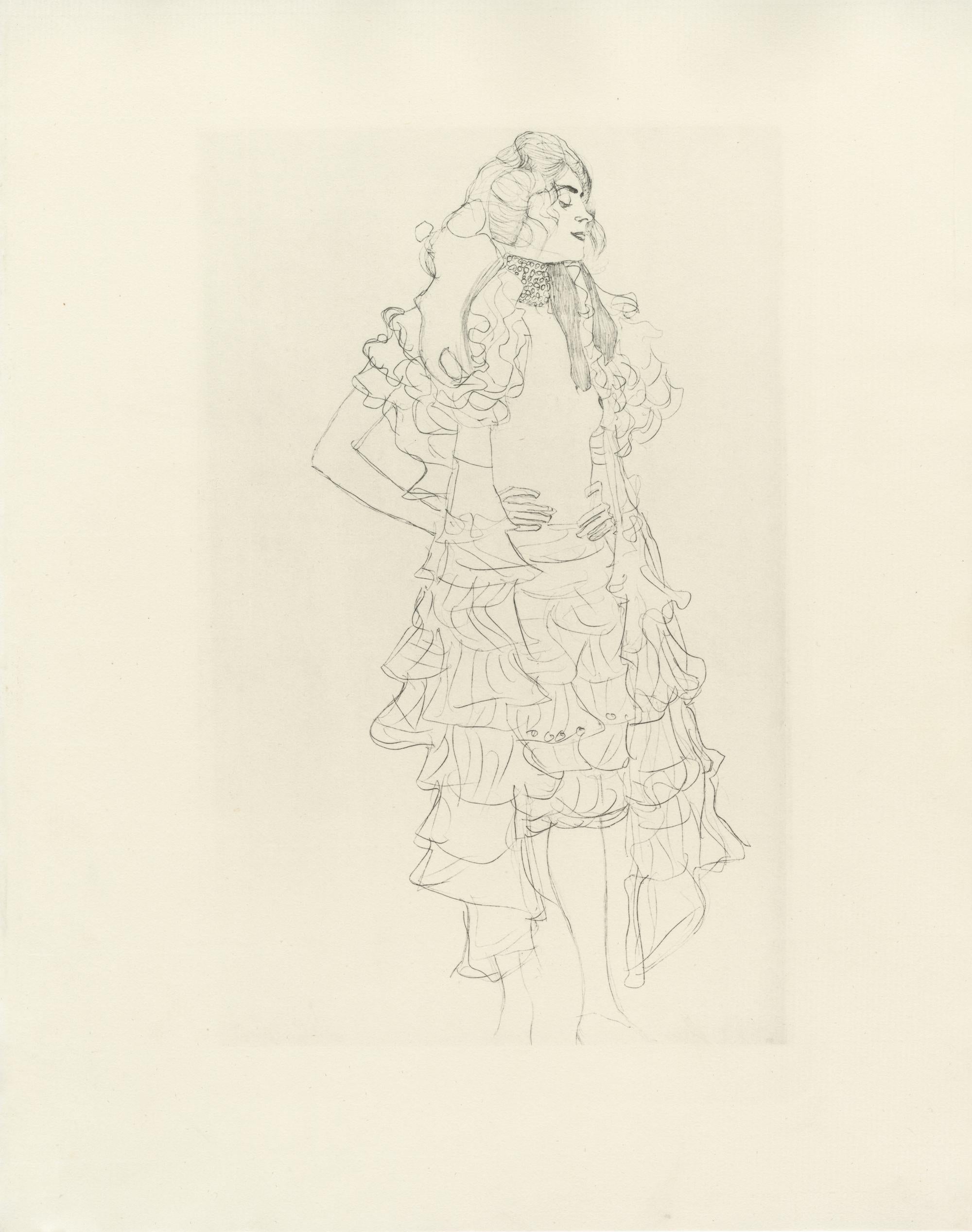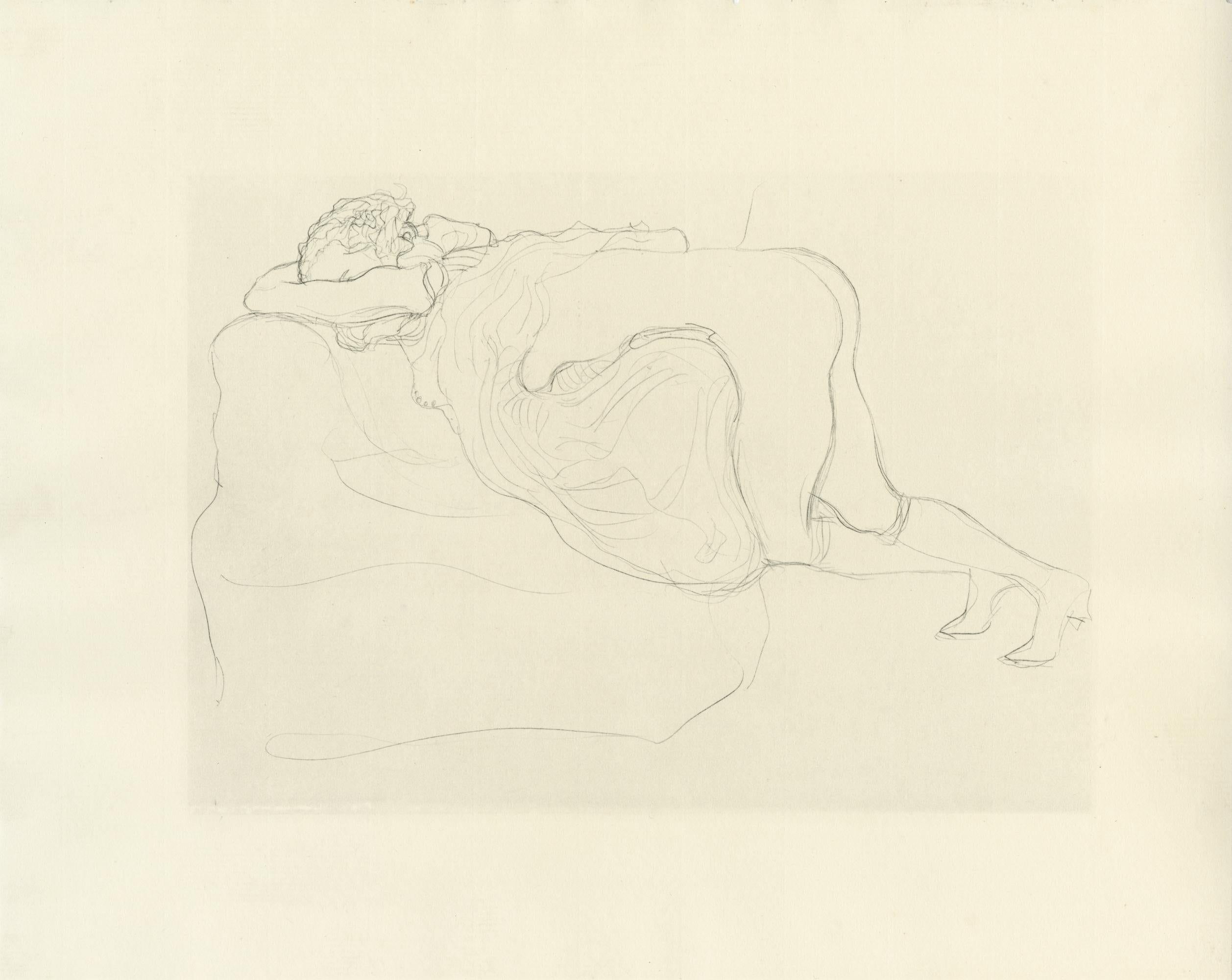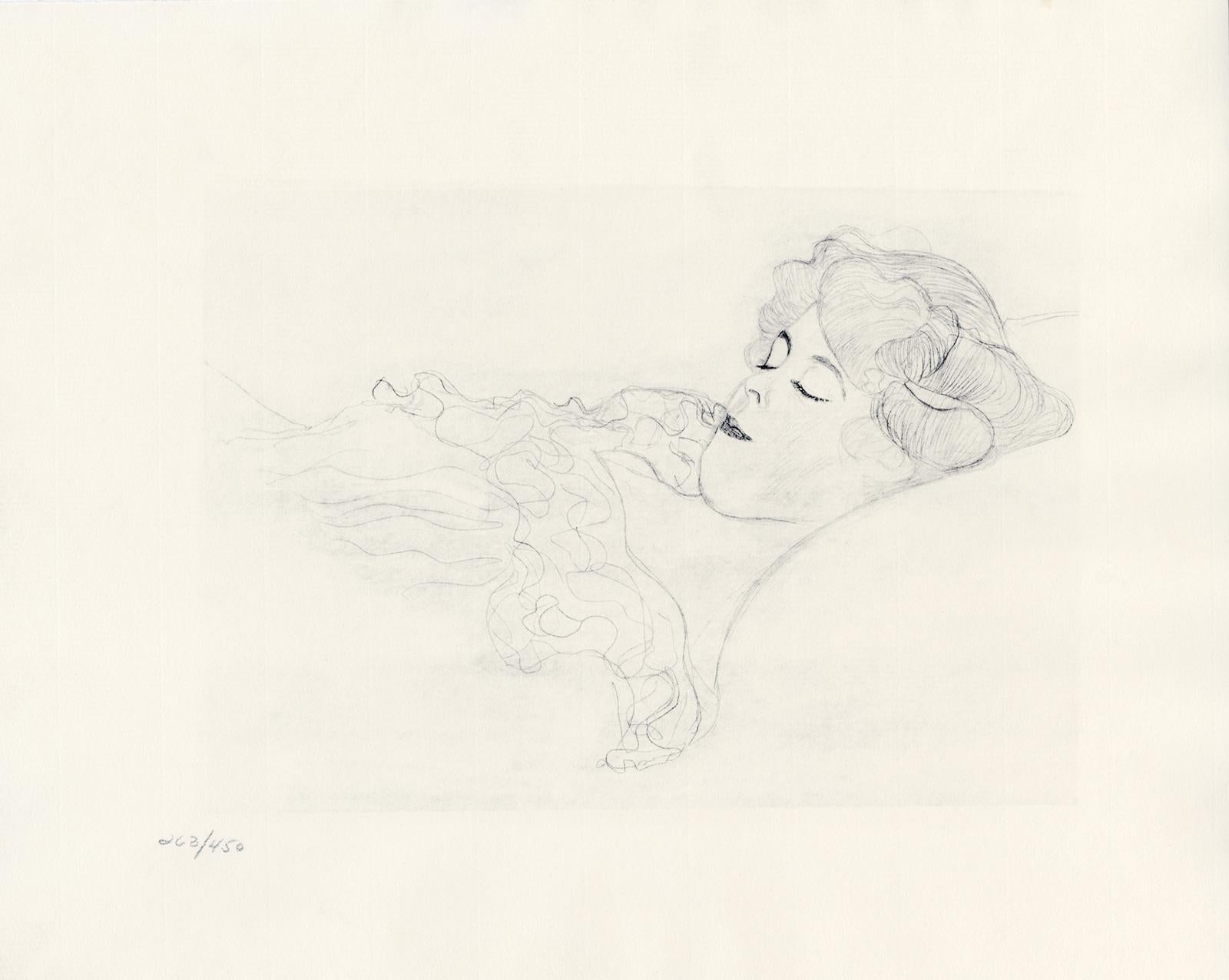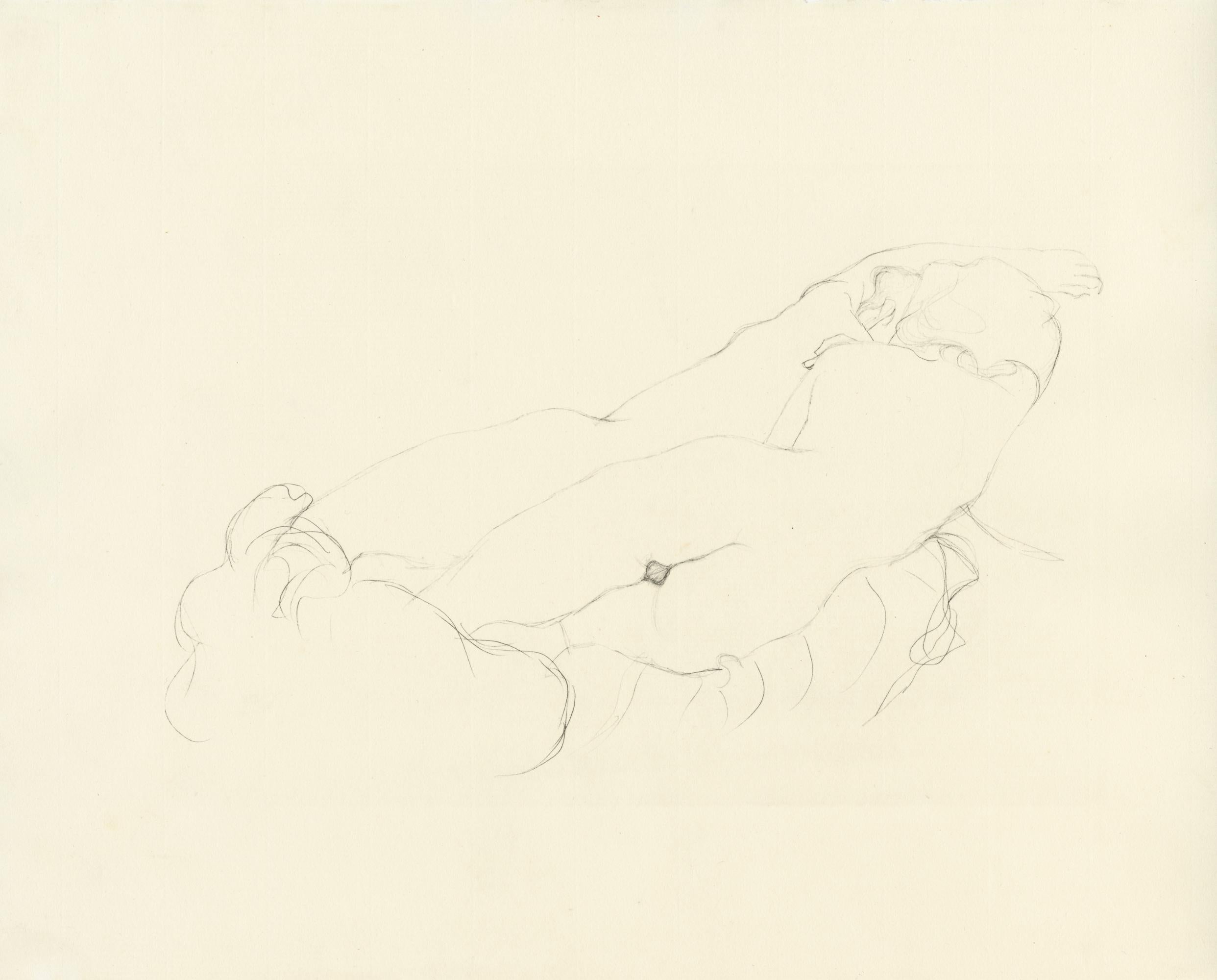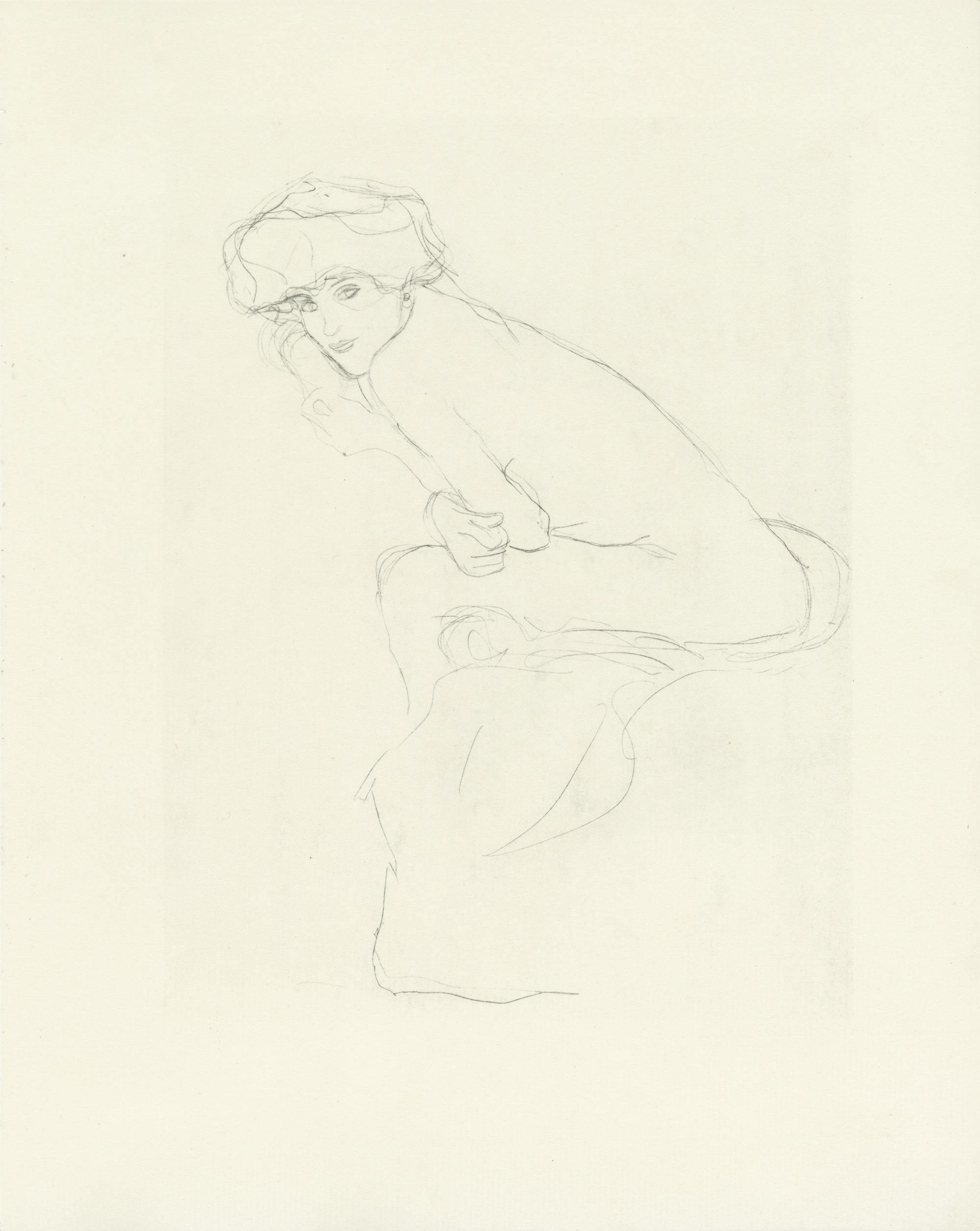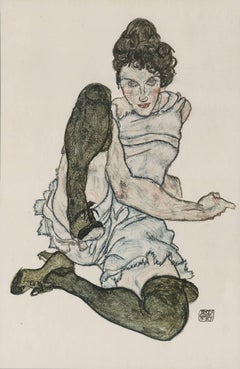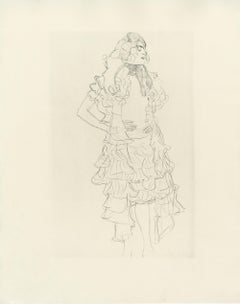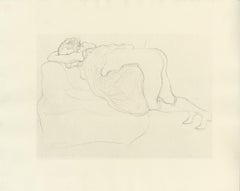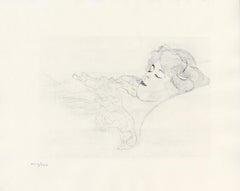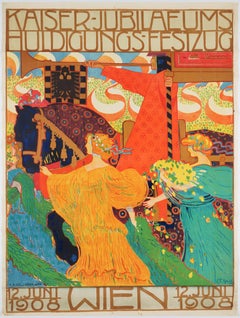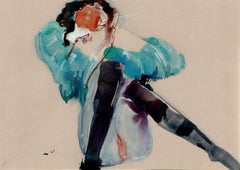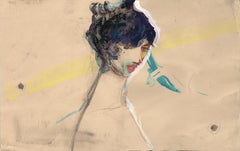Items Similar to E. Strache, Handzeichnungen folio, "Female Nude, Back View" Collotype plate
Want more images or videos?
Request additional images or videos from the seller
1 of 5
(after) Egon SchieleE. Strache, Handzeichnungen folio, "Female Nude, Back View" Collotype plate1920
1920
About the Item
after Egon Schiele (1890 – 1918), AUSTRIA
“ART CANNOT BE MODERN, ART IS PRIMORDIALLY ETERNAL.” -SCHIELE
Defiantly iconoclastic in life and art, Egon Schiele is esteemed for his masterful draftsmanship and precocious insight into the human condition. Part of the first wave of Austrian Modernism, he was swept away by the Viennese fascination with the tension between Life and Death (known in the works of Freud and his later interpreters as Eros and Thanatos). Life, identified with attraction, love, sexuality, and reproduction, and Death, represented by distortion, disease, repulsion, and hysteria, often appeared in the same composition, thereby suggesting the frightening life cycle of the human mind and body.
Young throughout his career, Schiele universalized his childhood traumas, thriving libido, insecurities, fears, and longings. His contorted line, jarring contrasts, and flat areas of color, demonstrate an early alliance with Expressionist philosophy and artists who were relentlessly frustrated by conventionality in all its forms. Schiele’s work embodied man’s disorientation and confusion in a seemingly absurd world, a world plagued by disease and war. It continues to be astonishingly relevant today, not just because it helped define Modernism but also because it revealed the dark and immutable aspects of the human condition.
Handzeichnungen, is a fine art portfolio consisting of 15 collotype prints after original watercolors and drawings by Egon Schiele, four of which are in color. Published by Verlag Eduard Strache, Vienna, Prague, Leipzig, 1920, in an edition of 510: the first group numbered I - X were hand signed by Schiele and included an original drawing by Schiele. The art images were printed by Kunstanstalt Max Jaffe, Vienna; the portfolio with printed written pages was printed by Gesellschaft fur Graphische Industrie, Wien VI.
Although Egon Schiele’s Handzeichnungen portfolio was published posthumously in 1920, there is evidence that on the heels of his highly successful sold-out run number-ing 400 copies with his 1917 portfolio of monochromatic prints entitled Zeichnungen, Schiele was already planning a bigger and more elaborate follow-up upon his untimely death in 1918. The final print in Handzeichnungen features a stunning color print of a Kneeling Female (semi-nude) from the collection of Kunsthandlung Richard Lanyi. This same image was the seventh featured in Schiele’s Zeichnungen portfolio from 1917 published by Richard Lanyi. Clearly, Schiele’s first publisher approved of Handzeichnungen’s publication as he contributed one of the featured works. He also saw the opportunity to showcase Schiele’s work from what had been an entirely mono-chromatic collection of prints to an even more highly sophisticated portfolio including color collotype print work. A copy surely was to be found in his gallery/salon, a hot-bed of intelligentsia activity.
Posthumous printed portfolios such as Handzeichnungen are a continuation of the tradition Gustav Klimt and Egon Schiele helped to develop and popularize in Vienna during their lifetimes. Schiele's hand joined so many ways of seeing to capture the erotic, the intellectual, the esthetic. In the early years of 20th century Vienna, there was no clear separation between fine art, science, sociology and politics or philosophy; the cross-pollinating character of Viennese intellectual life was robust. Rather than cut-off and confined to the university, intellectual activity thrived in social spheres such as coffee houses and salons. Huge overlap existed among these inter-disciplinary circles. In a city numbering approximately 2 million, only a few hundred comprised the cultural and political elite. Schiele exhibited widely, helped to organize exhibitions and had earned such a following that upon the death of Gustav Klimt in February the year following Zeichnungen’s publication, Schiele had naturally taken up the torch as Klimt’s successor. As leader of the 49th Vienna Secession Exhibition in 1918, the responsibility to create an exhibition poster and art for the main gallery fell on Schiele’s shoulders. Critical accolades for his Expressionist work made certain Schiele’s leading position in the world of art. Shiele’s posthumously published portfolio is, no doubt, an art piece as well as a key into the intellectual circles which characterized early-20th century Vienna. Schiele’s portfolios were the very picture of Viennese life: they were collaborations between a fine artist; art collectors; art promotors; idea disseminators; scientists; and printers.
The collotype print form was at this time the preferred method of reproducing fine works of art. The printer of Schiele’s Zeichnungen and Handzeichnungen portfolios was Max Jaffe, a Viennese specialist in fine art collotypes. This dichromate-based photographic process had been invented in 1856 and predates lithography. The gelatin plates required delicate preparation involving light exposure, washing, and curing. They were inked with a velvet or leather roller and printed using a hand proof process with a light-pressured press. Collotype plates could not be re-used; the limited edition prints made from colloid inks were stable and posed no danger of fading like other photographic processes of the time. In fact, the fine reticulations created on the plates using the collotype process produced prints of extremely high quality. Lithography later replaced the collotype process which has now become nearly a lost art.
- Creator:(after) Egon Schiele (1890 - 1918, Austrian)
- Creation Year:1920
- Dimensions:Height: 18.56 in (47.15 cm)Width: 12 in (30.48 cm)
- Medium:
- Movement & Style:
- Period:
- Condition:Literature: see "Egon Schiele: The Complete Works" by Jane Kallir. 1990. Pg. 575 (#1939).
- Gallery Location:Chicago, IL
- Reference Number:1stDibs: LU46736447272
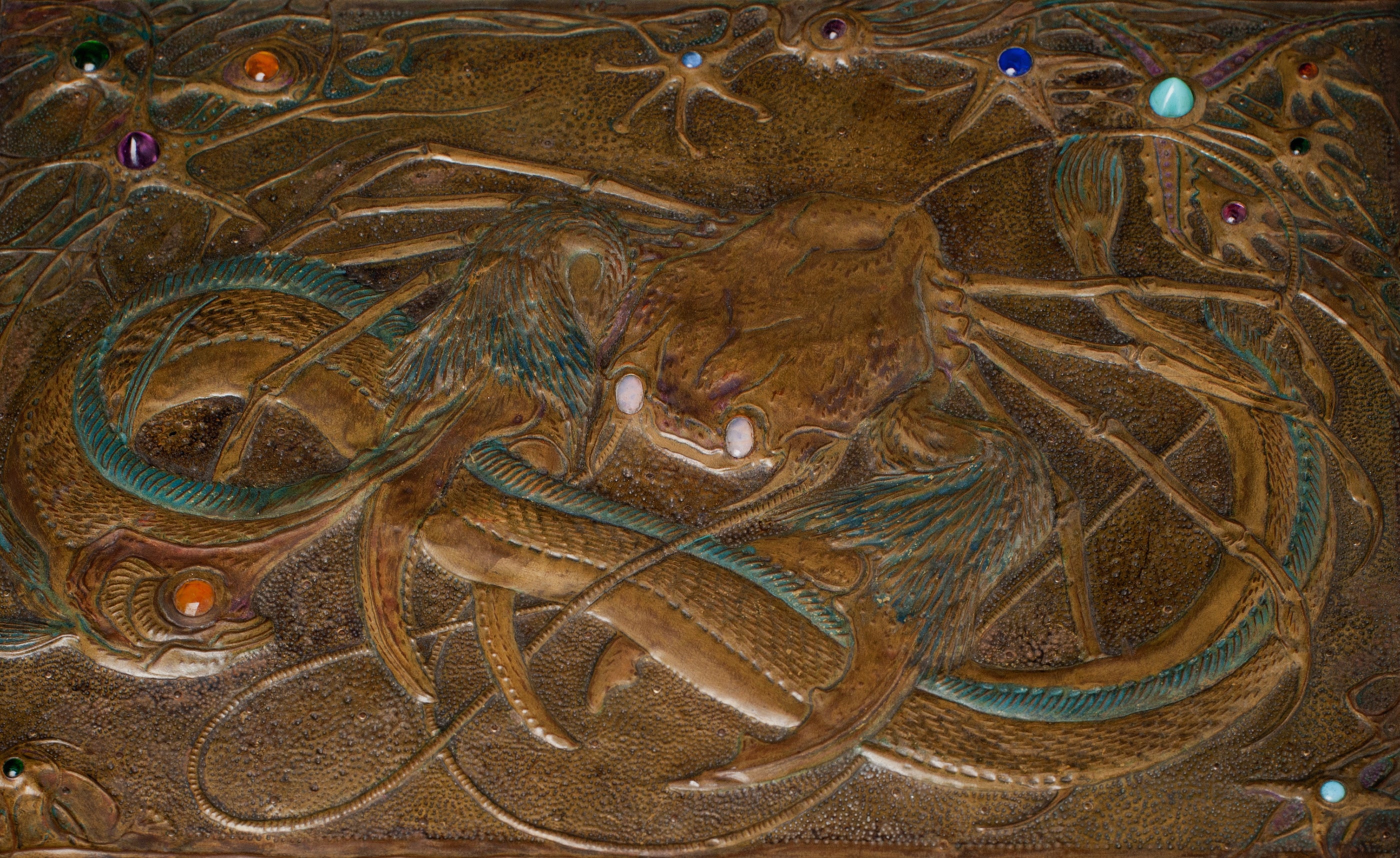
About the Seller
5.0
Vetted Professional Seller
Every seller passes strict standards for authenticity and reliability
Established in 2013
1stDibs seller since 2016
91 sales on 1stDibs
Typical response time: 2 hours
- ShippingRetrieving quote...Shipping from: Chicago, IL
- Return Policy
Authenticity Guarantee
In the unlikely event there’s an issue with an item’s authenticity, contact us within 1 year for a full refund. DetailsMoney-Back Guarantee
If your item is not as described, is damaged in transit, or does not arrive, contact us within 7 days for a full refund. Details24-Hour Cancellation
You have a 24-hour grace period in which to reconsider your purchase, with no questions asked.Vetted Professional Sellers
Our world-class sellers must adhere to strict standards for service and quality, maintaining the integrity of our listings.Price-Match Guarantee
If you find that a seller listed the same item for a lower price elsewhere, we’ll match it.Trusted Global Delivery
Our best-in-class carrier network provides specialized shipping options worldwide, including custom delivery.More From This Seller
View AllE. Strache, Handzeichnungen folio, "Female Model, Seated" Collotype plate
By (after) Egon Schiele
Located in Chicago, IL
After Egon Schiele (1890 – 1918), AUSTRIA
“ART CANNOT BE MODERN, ART IS PRIMORDIALLY ETERNAL.” -SCHIELE
Defiantly iconoclastic in life and art, Egon Schiele is esteemed for his mas...
Category
1920s Vienna Secession Figurative Prints
Materials
Paper
"Woman w/Lace Garment" by Gustav Klimt - Original Print from Courtesans Folio
By Gustav Klimt
Located in Chicago, IL
Plate #6 from Gustav Klimt's 1907 "Dialogues of the Courtesans" portfolio, consisting of 15 collotypes on cream japon paper. The drawings in this folio are said to be studies for Klimt's well-known Water Serpents paintings...
Category
Early 1900s Vienna Secession Figurative Prints
Materials
Paper
"Woman Leaning Over Chair" by Gustav Klimt - Original Print from Courtesan Folio
By Gustav Klimt
Located in Chicago, IL
Plate #8 from Gustav Klimt's 1907 "Dialogues of the Courtesans" portfolio, consisting of 15 collotypes on cream japon paper. The drawings in this folio are said to be studies for Kli...
Category
Early 1900s Vienna Secession Figurative Prints
Materials
Paper
"Sleeping Woman" by Gustav Klimt - Original Print from Courtesans Folio
By Gustav Klimt
Located in Chicago, IL
Plate #1 from Gustav Klimt's 1907 "Dialogues of the Courtesans" portfolio, consisting of 15 collotypes on cream japon paper. The drawings in this folio are said to be studies for Kli...
Category
Early 1900s Vienna Secession Figurative Prints
Materials
Paper
"Sleeping Couple" by Gustav Klimt - Original Print from Courtesans Folio
By Gustav Klimt
Located in Chicago, IL
Plate #15 from Gustav Klimt's 1907 "Dialogues of the Courtesans" portfolio, consisting of 15 collotypes on cream japon paper. The drawings in this folio are said to be studies for Kl...
Category
Early 1900s Vienna Secession Figurative Prints
Materials
Paper
"Woman Leaning Forward" by Gustav Klimt - Original Print from Courtesans Folio
By Gustav Klimt
Located in Chicago, IL
Plate #3 from Gustav Klimt's 1907 "Dialogues of the Courtesans" portfolio, consisting of 15 collotypes on cream japon paper. The drawings in this folio are said to be studies for Klimt's well-known Water Serpents paintings...
Category
Early 1900s Vienna Secession Figurative Prints
Materials
Paper
You May Also Like
Original Vintage Secession Poster celebrating the emperor's jubilee
Located in Zurich, CH
Original Vintage Poster by the Austrian artist Ferdinand Ludwig Graf, a member of the Hagenbund. This Viennese artist association moved as soon a...
Category
Early 1900s Vienna Secession Figurative Prints
Materials
Paper
erotic print nu poster
Located in Roma, GB
nude print
limited edition
print on paper
hand signed
certificate of authenticity
'Thanks to this psychological analysis, my paintings show emotions that people never experience ...
Category
21st Century and Contemporary Vienna Secession Figurative Prints
Materials
C Print, Color, Digital, Paper
nude erotic print
Located in Roma, GB
erotic print
female figure captured in a moment of an intimate delight. Flame orange color, shining blue, and clown-like intriguing face. lack and white.
Parts of her body appear...
Category
21st Century and Contemporary Vienna Secession Figurative Prints
Materials
Paper, Color, Digital
$1,346 Sale Price
35% Off
portrait Angie
Located in Roma, GB
free shipping standard parcel available
to be confirmed while submitting the order
artist: Anastasia Aureum
paper print
limited edition
hand signed
About the artwork:
This portra...
Category
21st Century and Contemporary Vienna Secession Figurative Prints
Materials
Paper, Color, Digital
Mädchen am Fenster. 1906-08.
By Oskar Kokoschka
Located in New York, NY
Mädchen am Fenster. 1906-08. Color lithograph printed on smooth card stock. Full margins. Tipped into a later presentaion folder, signed by the artist in pencil, on the recto. Published by the Wiener Werkstätte, Vienna, with the printed postcard text on verso. Among Kokoschka's earliest prints were a series of 14 postcards, the current work and the following lot that he produced for the Wiener Werkstätte. Wingler/Welz 4.
Oskar Kokoschka was an Austrian artist, poet and playwright best known for his intense expressionistic portraits...
Category
Early 1900s Vienna Secession Figurative Prints
Materials
Lithograph
Der Polster
By Max Kurzweil
Located in New York, NY
Kurzweil, Maximilian. Der Polster, 1903. Color woodcut on japon. Included as an insert in Pan. Unsigned. Framed.11 1/4 x 10 1/4. 1
Ref: Hofstatter, p. 241; Pabst, p. 154.
Maximillian Kurzweil was the co-founder of the Vienna Secession in 1897 and editor and illustrator of the influential Secessionist magazine Ver Sacrum...
Category
Early 1900s Vienna Secession Figurative Prints
Materials
Lithograph

